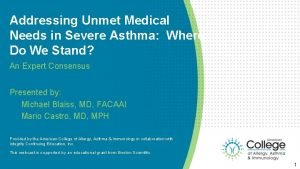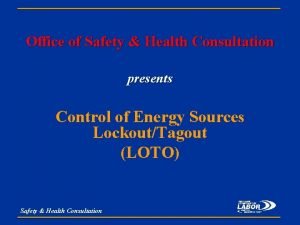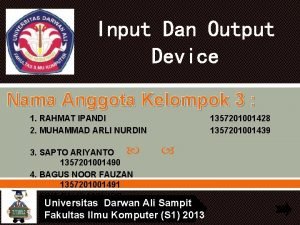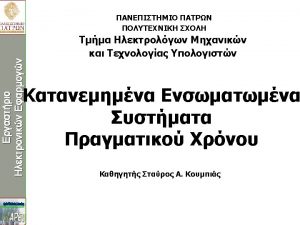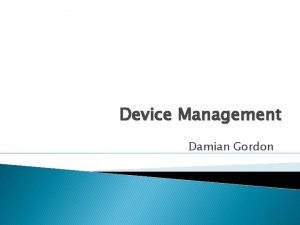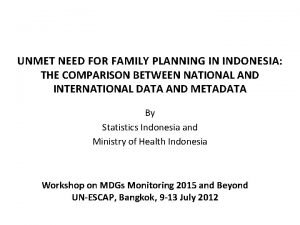Is There an Unmet Need for Device Treatment














- Slides: 14

Is There an Unmet Need for Device Treatment for Moderate Hypertension?

Disclosures Advisory Board: Ablative Solution CVRx Medtronic Recor Research Support (Trials): CVRx Recor

Moderate HTN ? • Blood pressure categories in the new US guideline are: • • Normal: Less than 120/80 mm Hg; Elevated: Systolic between 120 -129 and diastolic less than 80; Stage 1: Systolic between 130 -139 or diastolic between 80 -89; Stage 2: Systolic at least 140 or diastolic at least 90 mm Hg;

Moderate HTN ? • • Early disease Less Pill burden Minimal Target Organ Damage Better compliance ? • More suitable population than RH patients to demonstrate proof of concept for new technologies. Device based interventions can reduce or eliminate the need for antihypertensive drugs in achieving BP control and whether it may affect the efficacy of drugs. • • • Is there a need for device intervention ? Patient preference? Patient profile ? We are talking about renal denervation but unmed need for devices can be any devices

Unmet need for moderate HTN with Device Treatment • In which patient : the right device for the right patient – Extensive phenotyping – We need to move from a choice based on exlcusion criteria to a choice driven by physiology and pharmacology No ROX coupler in patient with PVD No barostimulator or barostenting if carotid plaques No RDN if abnormal renal anatomy • What type of BP lowering effect : SBP/DBP (attended / unatteded) , HBP, ABPM or CBP or Target Organ Damage • What are patient expectation : avoid ADR, drug burden, . .

Mahfoud et al. Eur Heart J. 2017 Nov 21; 38(44): 3272 -3281.

Tools for intraprocedural assessment • • Simple and reproducible intraprocedural technologies to evaluate the target and the extent of nerve ablation Markers such as: – veno-arterial noradrenaline gradient (the veno-arterial difference) • – BP changes induced by renal nerve stimulation • • – • sensing renal nerves sympathetic mapping Imaging (OCT) Needed ? – – • Greater periprocedural renal veno-arterial noradrenaline gradientreduction during RDN was associated with greater BP responses at 3 and 6 months post-procedure For the procedure Variability of answer like in drugs acceptable ? Trial needed Jong MR. Et al. Hypertension 2016; 68: 707– 714. Tiroch K. et al. Euro. Intervention. 2015 Nov; 11(7): 824 -34.

Yan Gong et al. Hypertension. 2016; 67: 556 -563

Alcohol, Radiofrequency, Ultrasound, : Class effect ? • Do not accept class effect • More preclinical data in suitable models (dogs, swine) – Benefit / risk ratio – Mechanism of Action • Device developed by and for cardiologists – Radial approach – Modulate intensity of the effect Aung Myat et al. Circ Cardiovasc Interv. 2013; 6: 184 -197

Preclinical models? • • Preclinical studies have been performed in healthy, normotensive porcine models. A suitable, hypertensive animal model with long-term FU would greatly help to further assess the BP effects and other surrogate markers of efficacy, e. g. , histological denervation and renal noradrenaline content. • Interesting model of modern human hypertension : Ossabaw breed, which appears to represent a translationally relevant model of hypertension with its associated comorbidities. RDN reduces diet induced hypertension in this model. However, the peri-arterial renal nerve anatomy in preclinical models differs from that in humans and it is unclear how applicable these results are to diseased vessels of patients with hypertension and atherosclerosis. • • Technology for small animals ? Mahfoud et al. J Hypertens. 2016; 34: 1854– 1862

Anatomy and Dose Response • It has been shown that arterial microanatomy determines the successof energy-based RDN. • In the future, assessment of the morphology of the arterial wall and the adventitia may be required before deciding on the most suitable device for each patient. (lymph nodes, geometry of the arterial wall) • The optimal degree of contact against the renal artery wall and the depth, duration and intensity of energy delivery to provide the best procedural results will need to be investigated and optimized for each specific renaldenervation technology. • As proper dose-response studies are lacking, there is no reliable information available to guide these efforts and there is no simple way to assess dose-response in human subjects currently. Tzafriri AR et al. Sci Transl Med 2015; 7: 285 ra 65

Follow up • A consistent and appropriate follow-up period between the procedure and histological examination is critical for the correct assessment of nerve injury. • The correlation between the duration of follow-up on nerve injury and arterial wall injury is unknown. • Nerve regeneration, has been observed in animalstudies but data in humans are very limited. • The possibility and clinical implications of nerve regeneration in humans need to be clarified with long-term follow-up of patients. • Change of pattern of HTN and related mechanisms • To investigate the persistence of the effects and management of pharmacotherapy Booth LC et al. Hypertension 2015; 65: 393– 400.

The classical management • Step by Step apporach for moderate HTN : – Non pharmacological approach • Low salt diet, physical activity, weight control, management of sleep, stress reduction – Pharmacological approach • Monotherapy • Fixed Combination Therapy – Alternative ? At the very early beginning ? Combination therapy? • Devices

Unmet need for HTN with Device Treatment: beyond RDN, a new ecosystem? • Device to improve pharmacological management of moderate HTN – Digital medicine • • • App Connected devices Motivational tool Patient Education / Care Empowerement Management led by patient, nurses – Digital medicine • Compliance – Education / Information • At every step
 Unmet financial need
Unmet financial need Unmet needs in severe asthma
Unmet needs in severe asthma Ram input or output device
Ram input or output device Market
Market Agitation method involves oscillation
Agitation method involves oscillation A tagout device is preferable to using a lockout device.
A tagout device is preferable to using a lockout device. Kelompok output device
Kelompok output device Fspos vägledning för kontinuitetshantering
Fspos vägledning för kontinuitetshantering Novell typiska drag
Novell typiska drag Tack för att ni lyssnade bild
Tack för att ni lyssnade bild Returpilarna
Returpilarna Shingelfrisyren
Shingelfrisyren En lathund för arbete med kontinuitetshantering
En lathund för arbete med kontinuitetshantering Underlag för särskild löneskatt på pensionskostnader
Underlag för särskild löneskatt på pensionskostnader Personlig tidbok för yrkesförare
Personlig tidbok för yrkesförare

